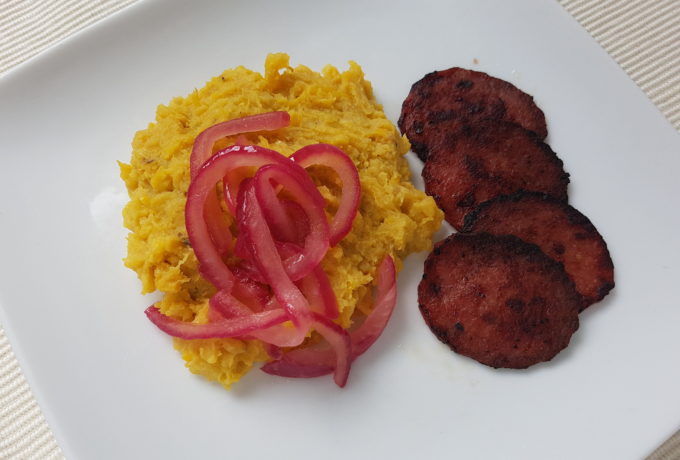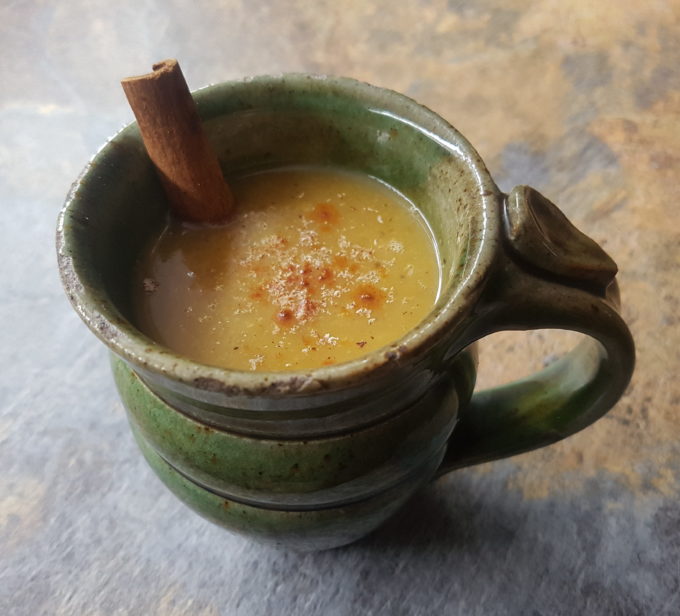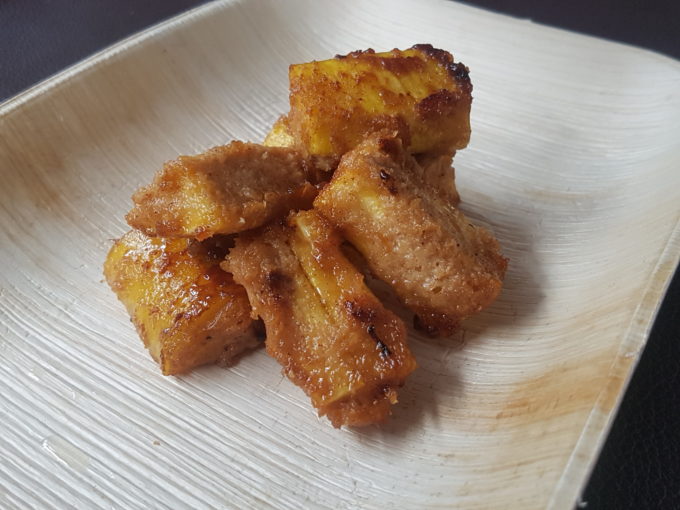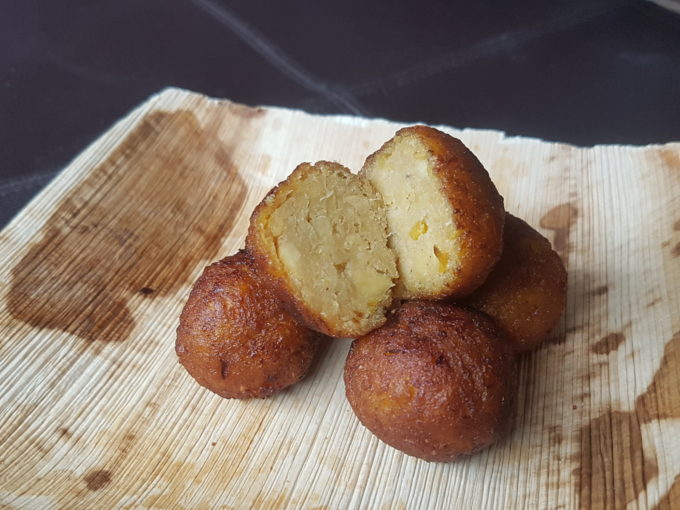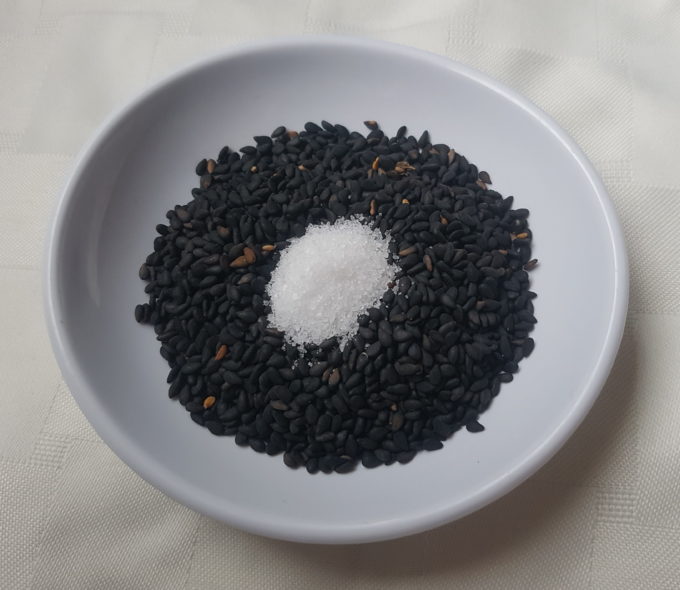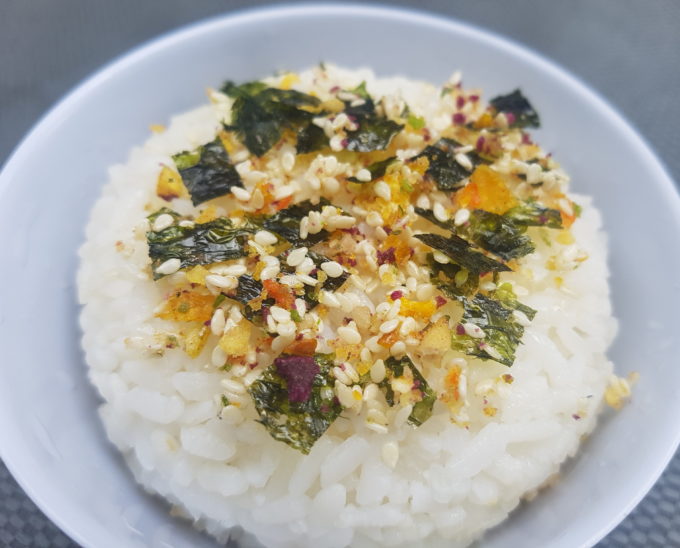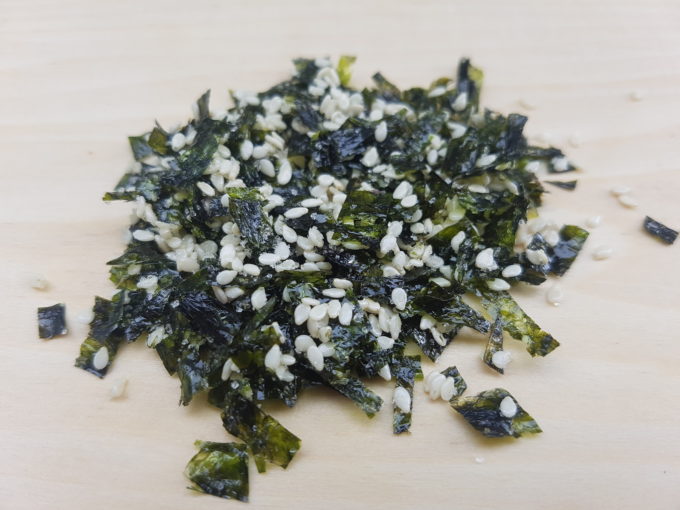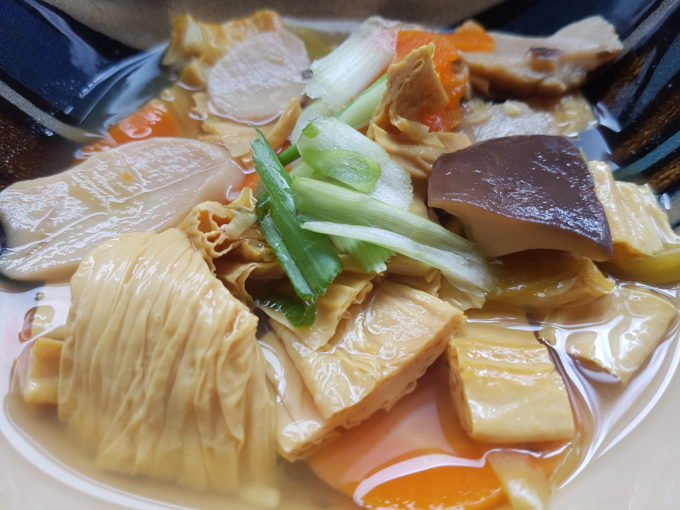This mashed green plantain breakfast (or lunch, or dinner) goes by the unique name of Mangú. One story goes that a visiting American Marine once tried the dish and announced, “Man! Good!” leading to it to forever be called such with a local accent. Another, perhaps more likely theory, states that the original name might […]
Read moreThis recipe hails from the Amazonian edges of Peru where hammocks and fires reign supreme. It would be no surprise then to discover a very clever way to turn very ripe plantains into a warming and energizing beverage. Okay, so it isn’t the same kind of energizing as coffee, but with plenty of carbohydrates it […]
Read moreKelewele (pronounced kay-lay-way-lay) is a West African street food that is particularly popular in Ghana. Commonly sold as cubed bits, people also like to slice them more like fries or potato wedges, and sometimes as medallions. These spicy seasoned and fried treats are great for parties, hors d’oeuvres, side dishes, and even tossed on salad. […]
Read moreYes, that is a spoof off barbecue, but no, I did not make it up. It is indeed a real thing, and a really popular thing! Also known as banana-Q, it’s actually quite funny in that these simple sweet treats are not actually barbecued, but rather fried and then served on barbecue skewers. This faux […]
Read moreThis recipe takes its roots from Ghana. The southern states in particular lean heavily on cassava and plantain as major staples, but the common culture throughout the country is to serve a meal centered around the starch of choice with a soup or stew, most often tomato based, and added protein, very often fish. Like […]
Read moreThis is the most basic of Furikakes. Simply unhulled sesame seeds and salt. It has been used in Japan for thousands of years over rice, fish, and a multitude of other dishes, but has gained some more recent fame as a lower sodium substitute to straight salt. Using a ratio anywhere from 15:1 to 5:1 […]
Read moreFirst, let’s distinguish the difference between a dolsot, a stone pot with a stone or wooden lid, and a ddukbaegi (sometimes written ttukbaegi), a ceramic pot that typically comes with no lid, although they are available. Besides the obvious appearance, the price tag is one of the first major differences. Here in Anchorage, and it […]
Read moreYasai Fumi Furikake is also known as veggie furikake. As yasai fumi means ‘vegetable flavor,’ it’s a wonderful way to take those otherwise nearly indistinguishable ‘healthfood’ vegetable chips, and turn them into something tasty. Now there are two common varieties of these vegetable snacks. For this recipe I used the vegetable chips, but one could […]
Read moreOne of the things I love about cooking new Asian foods is learning how to translate their names. Nori Komi took me a while to figure out. Not the nori part. That’s really easy; ‘seaweed.’ To be specific it’s a type of seaweed, nori. But the komi part took me a while to track down. […]
Read moreI have been very excited to finally have an excuse to buy the beautiful king oyster mushrooms that are currently in season. Raw, these large mushrooms have a pleasant aroma similar to a good sourdough, but when simmered they bring incredible umami flavor to a dish. The other main ingredient, dried bean curd sticks, take […]
Read more
